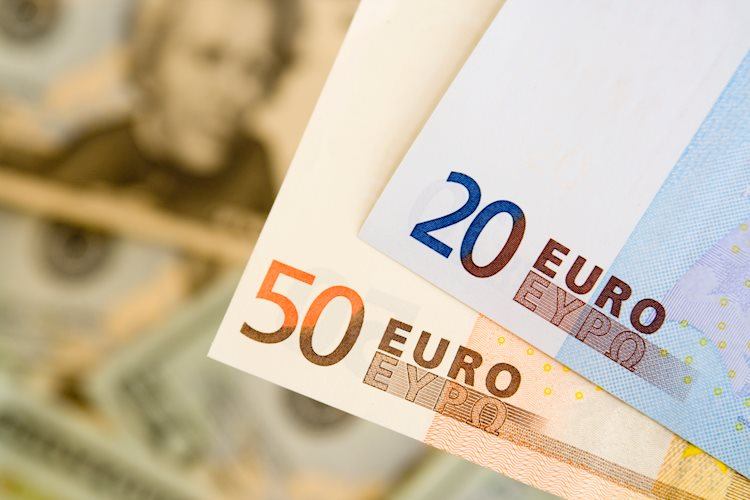The EUR/USD pair remains steady around 1.0920 during the early European session on Monday, supported by a consolidation of the US Dollar. Investors are eagerly awaiting the German August ZEW survey on Tuesday to provide new direction for the pair. Expectations are for a drop from 41.8 in July to 31.8 in August, while the current assessment is expected to show -75.0 compared to -68.9 previously. Weaker-than-expected data could lead to a negative economic outlook and keep the European Central Bank (ECB) in easing mode, with a September 12 rate cut already priced in. The bullish outlook for EUR/USD remains intact as the pair is trading above the key 100-day Exponential Moving Average (EMA) and the 14-day Relative Strength Index (RSI) is in bullish territory near 58.60, indicating potential upside. The first resistance level is at 1.0973, with a crucial resistance at 1.1000-1.1010. On the downside, initial support lies at 1.0881, followed by the 100-day EMA at 1.0822.
The Euro is the currency used in the 20 European Union countries that are part of the Eurozone and is the second most heavily traded currency after the US Dollar. In 2022, it accounted for 31% of all foreign exchange transactions with an average daily turnover exceeding $2.2 trillion. EUR/USD is the most traded currency pair in the world, making up around 30% of all transactions. The European Central Bank (ECB) in Frankfurt, Germany, serves as the reserve bank for the Eurozone and is responsible for setting interest rates and managing monetary policy. The primary goal of the ECB is to maintain price stability by controlling inflation or stimulating economic growth through interest rate adjustments.
Eurozone inflation data, measured by the Harmonized Index of Consumer Prices (HICP), plays a crucial role in shaping the Euro’s value. If inflation exceeds expectations and rises above the ECB’s 2% target, it may prompt the ECB to raise interest rates to curb inflation. Higher interest rates compared to other currencies can benefit the Euro, making the region a more attractive investment destination for global investors. Economic indicators such as GDP, Manufacturing and Services PMIs, employment data, and consumer sentiment surveys all play a role in influencing the Euro’s direction. A strong economy is positive for the Euro as it attracts foreign investment and may lead to interest rate hikes, strengthening the currency.
Data releases for the four largest economies in the Eurozone – Germany, France, Italy, and Spain – are particularly important as they collectively account for 75% of the region’s economy. Positive economic indicators such as Trade Balance, which measures the difference between a country’s exports and imports, can also impact the Euro’s value. A positive net Trade Balance, indicating high demand for exports, can strengthen a currency, while a negative balance can lead to currency depreciation. Overall, economic data releases and indicators play a significant role in shaping the Euro’s performance in the foreign exchange market.
In conclusion, the EUR/USD pair is holding steady around 1.0920 amid a slight US Dollar consolidation in the early European session. The upcoming German ZEW survey on Tuesday is expected to provide fresh impetus for the pair, with weaker-than-expected data likely impacting the ECB’s monetary policy stance. The bullish outlook for EUR/USD is supported by trading above the 100-day EMA and a bullish RSI momentum indicator. Key resistance levels are at 1.0973 and 1.1000-1.1010, while initial support lies at 1.0881. Economic data releases and indicators, including inflation data, GDP, and Trade Balance, play a significant role in influencing the Euro’s value and the direction of the EUR/USD pair in the foreign exchange market.











